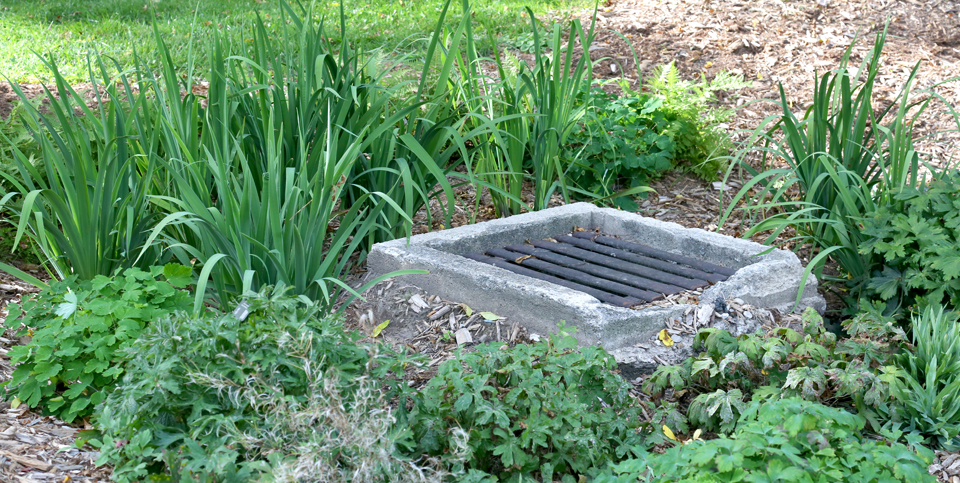 Bayfield’s Rain Gardens
Bayfield’s Rain Gardens
There are many ways you can reduce water pollution, but rain gardens may be the most beautiful of them. A rain garden is a shallow, sunken garden that is designed to collect, absorb and filter stormwater runoff from roofs, roads and driveways.
Members of the Blue Bayfield committee assisted in the planting of two sample rain gardens planted at the south edge of Pioneer Park. Check them out next time you’re in the park and consider planting one of your own to help protect our beautiful lake! The more we plant the better they work!
Plant your own Rain Garden!
- Find a suitable location for your garden. It’s easiest to install a rain garden in an area of your yard that water already flows to or through. Your end goal is to reduce runoff. You can usually identify a suitable area by examining your yard during a rain storm to see how water flows off it.
- Determine how deep your garden should be. The ideal depth for a rain garden depends on the slope of the garden area. A flat area or one with a very gentle slope can be as little as 3-5″ deep, while 6-7″ works best for a 5-7% slope, and 8-10″ works best for an 8-12% slope.
- Add some compost. Depending on your soil, you may not need to add organic matter, but it can loosen the soil, enhancing its permeability and making it easier for new plants to develop strong roots.
- Level the bottom of your basin. Once you’ve dug the entire area out to the correct depth, “fine tune” your leveling either by eyeballing it or by taking a long 2×4 board and placing it on the ground with a carpenter’s level atop it.
- Build a berm to hold the water in. A rain garden can’t do its job if water just flows out of it, so if there’s any slope at all, you’ll need to build a berm (an earthen dam) around the downhill edge and up the sides.
- Plant an assortment of perennial plants in the garden. It’s best to choose native plants when possible, as they generally require the least care to thrive and also tend to develop strong root systems.
- Add a layer of mulch. A 2″ layer of mulch will help keep weeds down and help your plants get off to a good start.
- Control weeds. As with any newly planted garden, weeds will likely be a problem. Pull them regularly, and as your garden matures, your plants will eventually choke out the competition from weeds.
Ideal Plants For Local Rain Gardens
- Swamp Milkweed
- Joe-pye Weed
- Boneset
- Green-headed Coneflower
- Blue vervain
- New Jersey tea
- Butterfly Milkweed
- New England Aster
- Sky Blue Aster
- Sweet Ox-eye
- Wild Bergamont
- Black Eyed Susan
- Wild geranium.
Contact one of Bayfield’s local garden centres for more information on planting a rain garden, Gold Coast Landscaping, Huron Ridge Acres or Stonefield Garden Centre. Happy Planting!
Page 23
